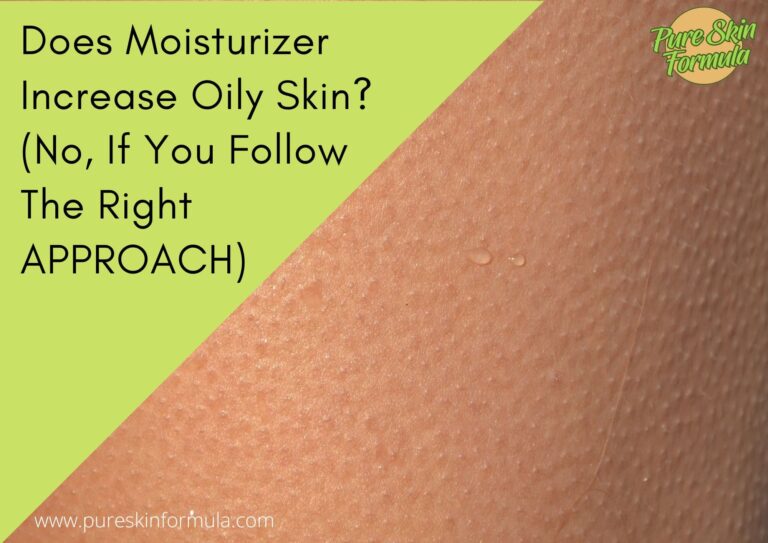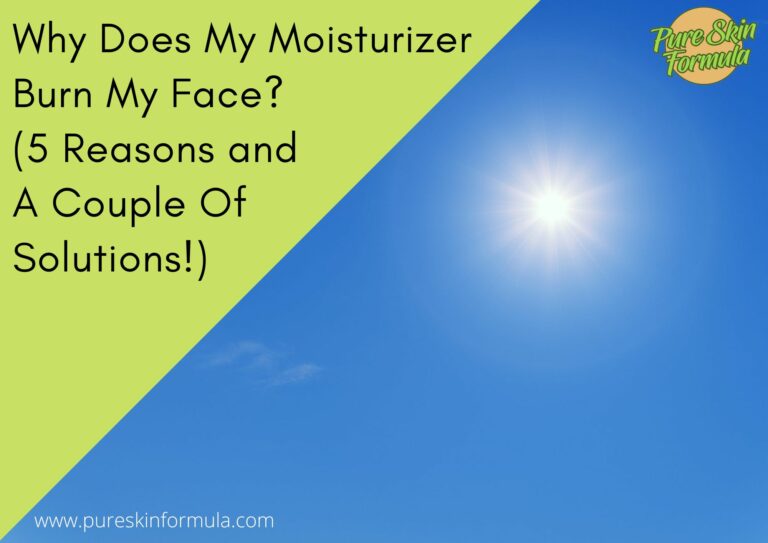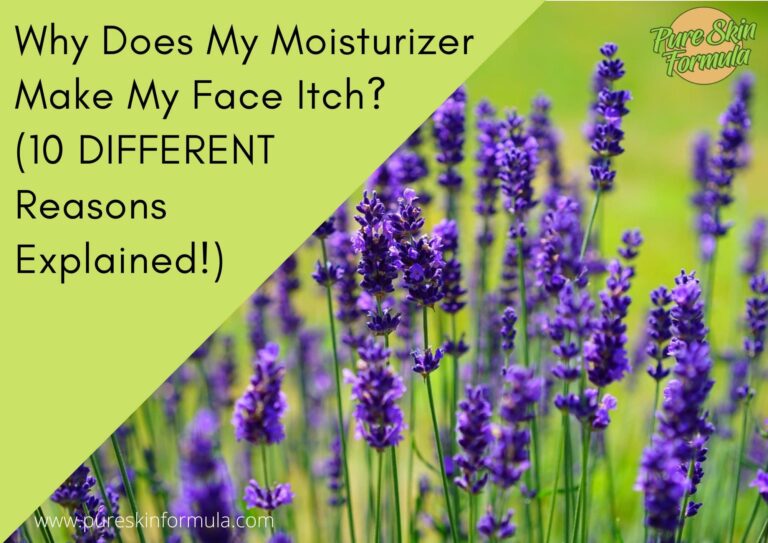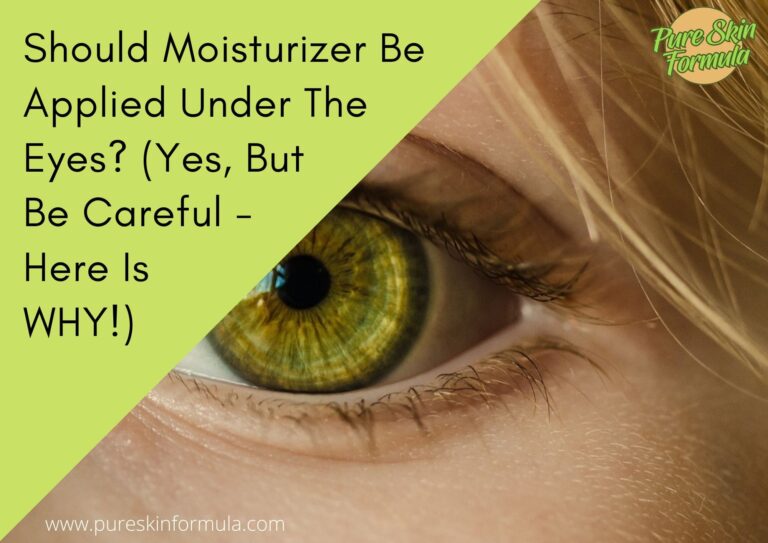There are versatile reasons why your moisturizer could not sink in. Some are related to your skin, others to your product or how you apply it.
I have explored seven reasons why this might happen. Here they are:
Why is my moisturizer not sinking in?
- You apply the moisturizer the wrong way;
- You use the cream either in the wrong quantity or at the wrong time;
- There is an excessive quantity of dead skin;
- The product used doesn’t match your skin type;
- Some ingredients are more appropriate than others;
- The moisturizer might clog your pores;
- You apply the product cold.
Let’s see a bit more in detail each of the 7 points and understand how to avoid the unpleasant situation of having unabsorbed moisturizer on our skin.
You apply the moisturizer the wrong way.
The result might be less efficient if you are rather harsh and rushed than gentle and careful when applying the product.
Patting in the cream on the skin is a good technique, giving enough time and heat for sound absorption.
Apply the cream in the right direction.
If you’re rubbing the cream in a haphazard motion all over your face, it won’t penetrate the lower layers of your skin well.
There are memorable massage lines to spread the cream with your fingertips.
Every morning and evening, do a facial massage (only takes a minute) – the movements should be from the centre to the periphery.
This means starting by applying the cream with the fingers of both hands from the middle of the forehead to the temples, from the nose to the ears, and from the middle of the chin to the cheeks.
Wrong quantity or wrong time
Another issue is that you use too much cream. Your skin needs as much cream as it can absorb.
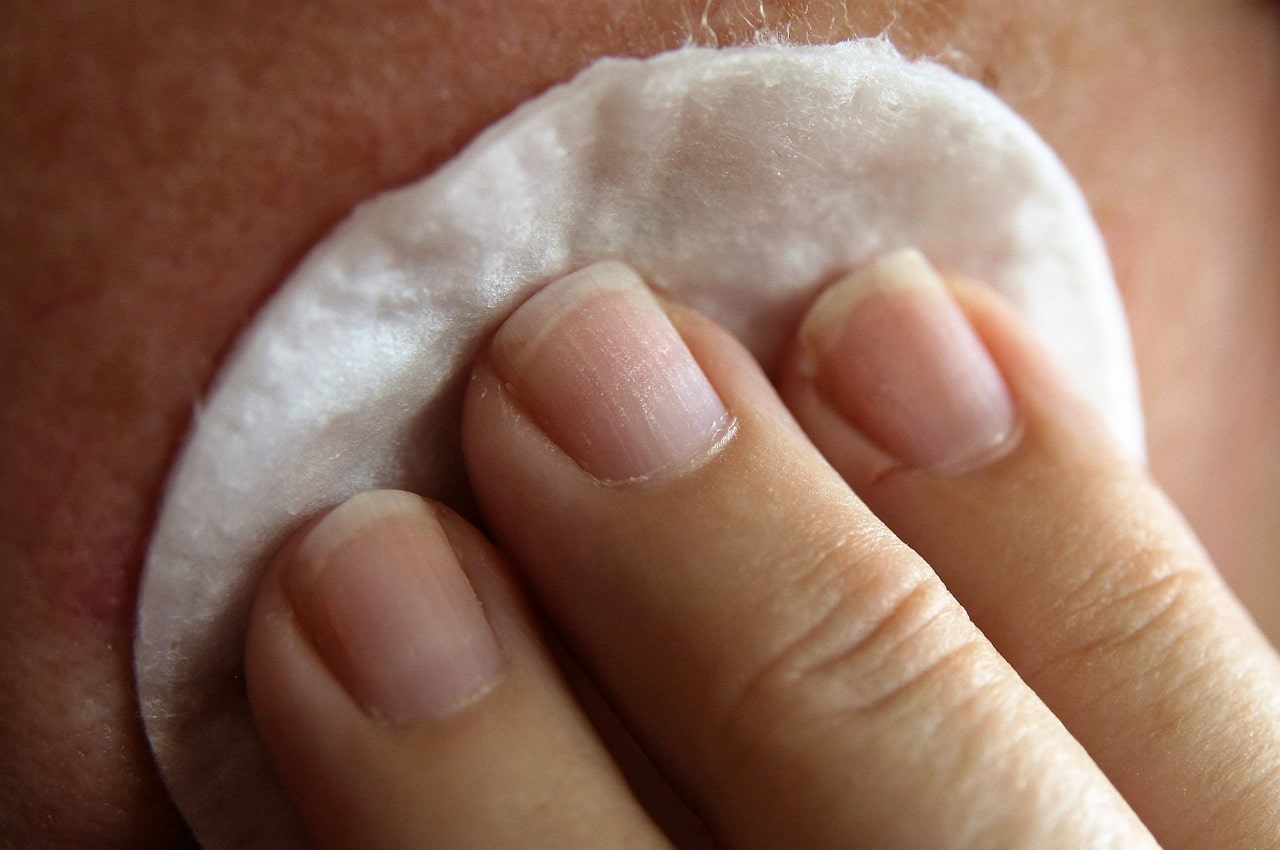
If traces of the cream remain on its surface, it leaves it without vital oxygen, leading to premature wrinkles.
Another misuse of the product is connected with the wrong timing. You slather yourself with cream and go out.
Your face is still “oily”, and the sticky texture (even though it doesn’t feel sticky) attracts all the dust particles in the air like a magnet.
They layer on your face and clog your pores. So, apply the cream an hour before going out – that’s all it takes for the texture to soak in and penetrate where it’s needed.
There is an excessive quantity of dead skin
Do you exfoliate your skin? If not, the dead skin cells might prevent the moisturizer from penetrating your skin.
Sometimes, it is not about scrubbing the skin. It is just a matter of cleaning your skin well!
There are moments when washing with water, and a cleaning product is not enough. The pores are clogged so seriously that it’s even visible to the naked eye.
Wipe your face with a pad well-soaked in micellar water. When you have a bit more time – take a pore-unclogging steam bath).
The product used doesn’t match your skin type
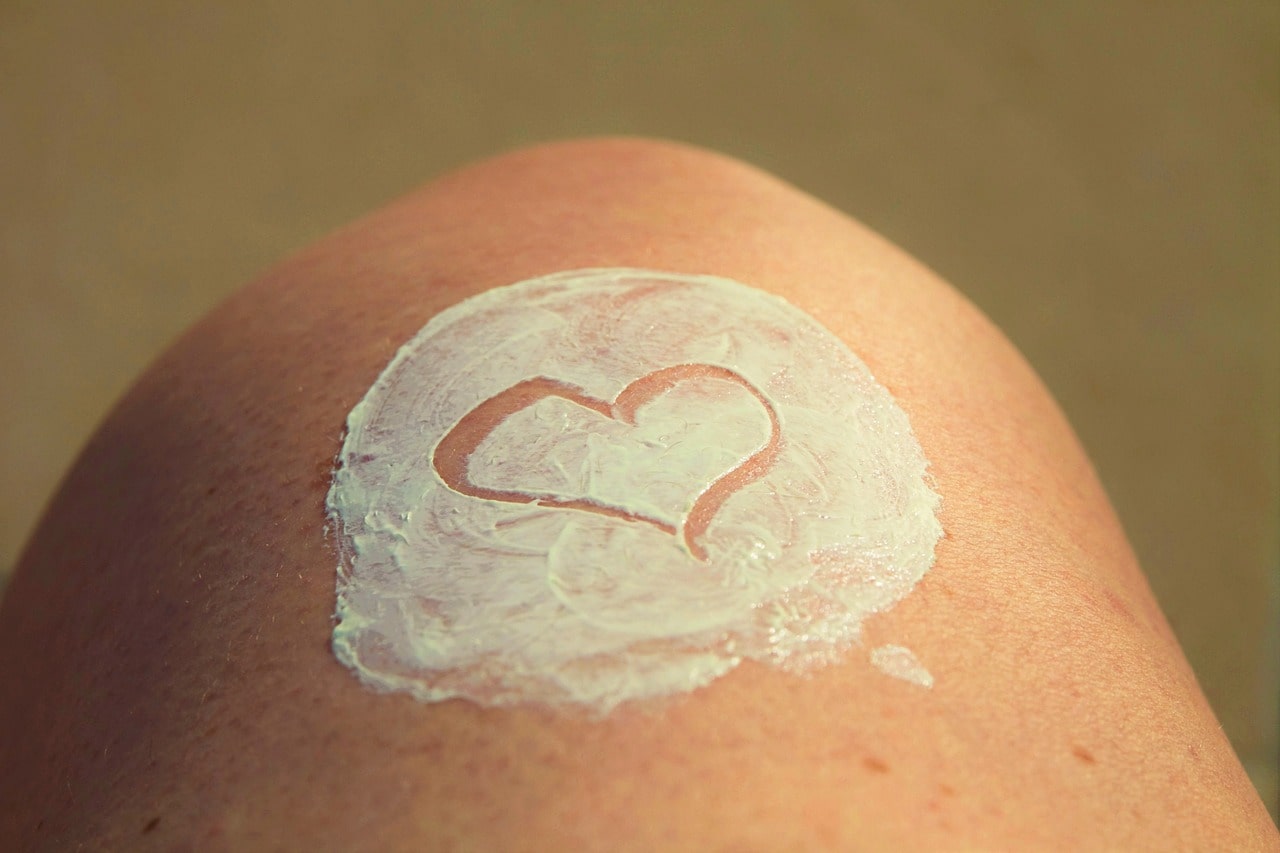
This is self-explanatory. People have different skin types. You have to explore the product before applying it.
Ask for a sample in the store, or if you have already bought it, make a patch test to see the reaction.
The effect might be versatile: skin more oily (or the opposite – drier) than expected, too sticky or stretchy.
Another signal: the product could flake off, and you can remove it quickly.
Some ingredients are more appropriate than other
There are three main groups of ingredients for keeping the skin moisturized and hydrated.
Emollients (like shea butter and cocoa butter) help to make the skin soft and smooth while preventing dryness.
They are included in the composition of various beauty products, often as lipids (fats), oils, silicones or chemical additives such as propylene glycol.
Emollients are naturally present in the skin’s stratum corneum and soften, smooth and condition it by filling the gaps between the cells/skin scales with oil droplets.
Applying them helps replenish depleted lipids and is especially effective when combined with ceramides, cholesterols and fatty acids.
Occlusive moisturizers contain ingredients that create a physical barrier on the skin that helps prevent transepidermal water loss and are most effective when applied to wet skin.

This type of moisturizer feels thick and heavy after application as it is not absorbed into the skin.
The most widely used and effective occlusive agent is petrolatum (vaseline), which can reduce transepidermal water loss by more than 98% when used at a minimum concentration of 5%.
It is followed by lanolin, mineral oil, and silicones (dimethicone), which reduce water loss by only 20-30%.
Humectants are hygroscopic substances that have a molecular structure of several hydrophilic (water-loving) groups – hydroxyl (OH) and/or amino groups (NH2).
This means they draw water into the epidermis from the dermis and/or from moist environmental conditions. In addition, many humectants also possess emollient properties.
Because these types of moisturizers draw water from the dermis, in some instances, their excessive use can aggravate dry skin conditions.
Glycerin is considered one of the most effective humectants, although hyaluronic acid is the best known.
In addition to acting by drawing water from the dermis into the epidermis, hyaluronic acid can form a barrier over the skin to reduce transepidermal water loss.
The moisturizer might clog your pores
If the moisturizer is comedogenic, it could clog your pores and cause comedones and even inflammatory pimples.
If this is your case, you should use non-comedogenic or less comedogenic products, like aloe vera.
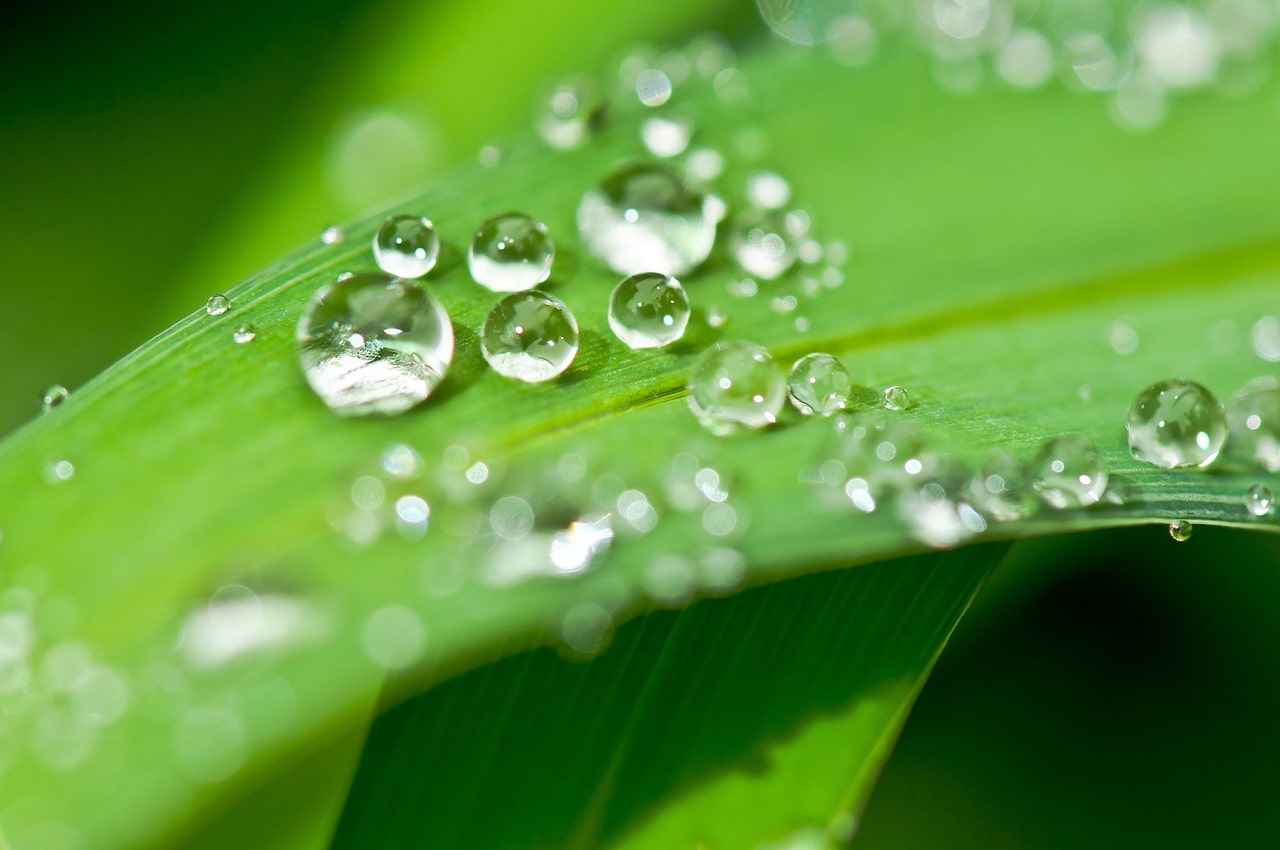
You apply the product cold
Some people keep the cream in the refrigerator to increase its shelf life.
This is a good idea if the packaging specifically says it’s suitable for refrigeration (usually valid for eye creams).
But putting a cold cream on your face is not rational – its ingredients are “frozen” and therefore don’t work as effectively. If you insist on keeping it in the fridge (because that extends its shelf life), take it out an hour before use and warm its texture between your fingers before putting it on your face.
Here are a couple of tips
If you have oily skin, try to avoid heavy and thick moisturizers. For dry skin, you could use richer creams.
Another strategy is to apply two layers of the product in use. Just wait a few minutes before applying the second layer.
You could also experiment with two types of moisturizers – for example, a heavier one at night and a lighter version during the day.
A trick you can implement is to apply the product on a damp face after you have washed it.
To wrap it up
Moisturizers not sinking in is a relevant scenario. But no worries. There are three reasons why this might happen.
Usually, they are connected to your skin, the product you use, or how you apply it.
What you should do is explore and find out the exact reason. Then you should take action, using the knowledge and the tips shown here.
Thank you for reading!
Valeria


